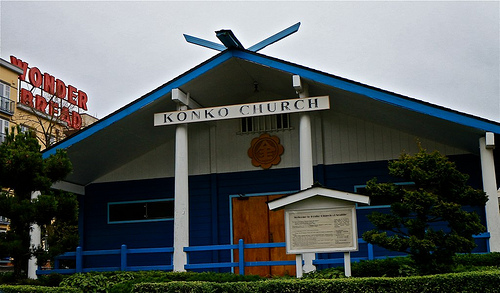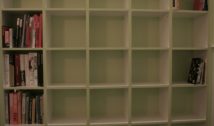
Japanese Churches in Boyle Heights Fight to Keep Their Membership
- By Alison Lesley --
- 31 Dec 2014 --

Boyle Heights, once home to a thriving Japanese American population, has seen its Buddhist and Shinto numbers dwindle. The last temples are fighting to stay.
Boyle Heights, a neighborhood located in Los Angeles, CA, used to have an extremely diverse group of residents. The community that formerly consisted of Italian, Jewish, Russian and a considerable number of Japanese and Japanese American residents has now become an area populated primarily with Hispanic and Mexican inhabitants. As a result of this neighborhood change and decrease in diversity, the number of residents who currently practice Buddhism or Shintoism is significantly dwindling. Because of the fact that the size of their congregations have drastically downsized, as these various temples continue their struggle to keep pace, they have began to reach out to a broader array of people in their local neighborhood.
At the present, there are four Japanese churches remaining in the community of Boyle Heights. One of these four, the Konko Church practices Shintoism which is the oldest form of Japanese religion, and its traditions are still widely practiced in the country of Japan. The church itself sits next door to the Latino-owned El Rinconcito del Mar Restaurant and down the street from the La Fe Medical Clinic.
I visited the 4 remaining Japanese churches in Boyle Heights and wrote this story about their past and their future: http://t.co/iqAEQIHiGL
— Samantha Masunaga (@smasunaga) December 23, 2014
Before World War II, Boyle Heights was home to the most Japanese American residents in the entire Southern California area. The majority of those residents were Japanese-speaking, and a Japanese hospital sat near Japanese-owned grocery stores. In the 1920s and 1930s, several Japanese churches were established. Today, there are about 84,000 people residing in the Boyle Heights community, but only around 100 of them are of Japanese descent. Besides the four churches, the only other remaining Japanese businesses in Boyle Heights are the Otomisan restaurant, the Haru Florist, and the Rafu Chuo Gakuen Japanese-language school.
Years ago as the Latino Americans began moving into the Boyle Heights area, and the Japanese Americans began moving out, a large number of loyal Japanese churchgoers ended up relocating miles away to areas such as Gardena, Orange County, and Torrance. As these church members aged, they could no longer make the lengthy commute into Boyle Heights. As a result, one of the churches actually ended up leaving Boyle Heights and moved closer to parishioners who were in the San Gabriel Valley.
The Konko Church, the Nichiren Buddhist Temple, the Rissho Kosei-Kai, and the Tenrikyo Mission Headquarters are the four remaining Buddhist and Shinto Japanese churches in the Boyle Heights area. Nichiren has also considered relocating to the Gardena and/or O.C. areas in order to be closer to their members. Both the Tenrikyo and Rissho Kosei-Kai receive financial support from Japan, the location of their main offices, which helps them manage even with their diminished numbers. Both churches also draw many parishioners from other places. Tenrikyo acquires members from Canada and New York, while Rissho Kosei-Kai obtains some of their congregants from San Diego and Lompoc.
The religious leaders of these churches have all been dealing with their dwindling congregation numbers in a variety of ways, but they all agree that if they want to survive as a whole, regardless of the demographical changes, they have to broaden their horizons and encourage residents in their neighborhood to pray with them and join their congregations. Through maneuvers such as the installation of “Everyone Is Welcome” signs, hiring of Spanish-speaking ministers, and hosting sanctuary-based martial arts classes for the youth in the community, all of these churches are gaining more Latino and white congregation members whilst continuing to take care of their native Japanese American parishioners as well.


















